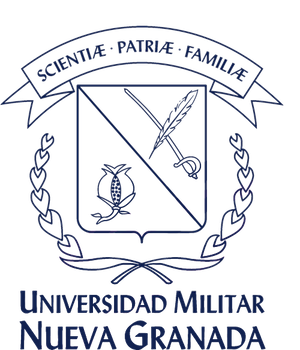El Espacio de Radón y el Segundo Teorema de Thales de Mileto
Resumen
En el contexto médico, después que un paciente ha sido irradiado con rayos-x, los detectores del tomógrafo registran los valores de la densidad correspondientes a un corte seleccionado de su cuerpo. La información obtenida en el dominio espacial (sistema de coordenadas del paciente) es representada por medio de unas funciones denominadas proyecciones en el dominio o espacio de Radon (sistema de coordenadas de la máquina de imágenes). Posteriormente, la imagen borrosa del espacio de Radon es reconstruida en el dominio espacial por medio de algoritmos de inversión de la transformada de Radon. Existe una variedad de algoritmos de reconstrucción de imágenes tomográficas; unos organizan las proyecciones en forma cartesiana y otros en forma polar. En este documento se describen los lugares geométricos generados por puntos del corte, tanto en el espacio cartesiano de Radon como en el espacio polar de Radon. Las trayectorias en el espacio polar de Radon son consecuencia del segundo Teorema de Thales de Mileto.
Descargas
Lenguajes:
esReferencias bibliográficas
Boman J. 1990. On generalized Radon transforms with unknown measures, Contemporary Mathematics, 113:5-15.
Bracewell R.N. 1995. Two-dimensional imaging. Eglewood Cliffs, NJ: Prentice-Hall.
Buzug T.M. 2008. Computed Tomography. From Photon Statistics to Modern Cone Beam CT. Leipzig, Germany: Springer.
Cormack A. M. 1963. Representation of a function by its line integrals, with some radiological applications. Journal of Applied Physics, 34:2722-2727.
Collette J. P. 1985. Historia de las matemáticas, Vol. I. Madrid: Siglo XXI.
Donson M. E., y Grünbaum F.A. 1981. Tomographic reconstructions with arbitrary directions. Comm. Pure and Applied Mathematics, 34:77-120.
Deans S. R. 1983. The Radon Transform and some of its applications. New York: John Wiley and Sons Inc.
Defrise M., y Guillberg G. T. 2006. Image Reconstruction. Physics in Medicine and Biology, 51:139-154.
Farrington B. 1979. Ciencia Griega. Barcelona: Icaria.
Falconer K. J. 1983. X-ray problems for point sources. Proceedings London Mathematical Society, 46:241-262.
Gordon R. 1975. Image processing for 2-D and 3-D reconstruction from projections: theory and practice in medicine and the physical sciences. Digest of technical papers, Stanford, California, August 4-7 (1975), Sponsored by the Optical Society of America.
Grinberg E. 1985. On images of Radon transforms. Duke Mathematical Journal, 52:939-972.
Gonzáles R.C., y Woods R.E. (2002). Digital Image Processing. New Jersey: Prentice-Hall.
Helgason S. 1980. The Radon Transform. Birkhäuser. Second Edition.
Herman, G. T. 1980. Image Reconstruction from Projections. The Fundamentals of Computarized Tomography. Academic Press.
Health T. 1981. A history of greek mathematics, Vol. I. New York: Dover.
Herman G.T. 2009. Fundamentals of Computarized Tomography: Image Reconstruction from Projections (Advances in Pattern Recognition). 2nd Ed, Springer.
Kak A. C., y Sallaney M. 1988. Principles of Computarized Tomography”. New York: IEEE press.
Kalender W. A. 2006. Computed Tomography: Fundamentals, System Technology, Image Quality, Apllications. Wiley.
Ludwig D. 1966. The Radon transform on Euclidean Space. Communications on Pure and Applied Mathematics, 23:49-81.
Macovski A. 1983. Medical imaging systems. Englewood Cliffs, NJ: Prentice- Hall.
Markoe A. 1986. Fourier inversion of the attenuated Radon transform. SIAM: SIAM Journal on Mathematical Analysis, to appear.
Natterer F. 1985. Fourier reconstruction in tomography. Numerische Mathematik, 47:343-353.
Matterer F. 1986. The Mathematics of Computarized Tomography”. New York: John Wiley&Sons.
Nievergelt Y. 1986. Elementary inversion of Radon’s transform. SIAM Reviews, 28:79-84.
Quinto E. T. 1980. The dependence of the generalized Radon transform defining measures. Transactions of the American Mathematical Society, 257:331–346.
Radon J. 1917. Über die Bestimmung von Funktionen durch ihre Ihre Integralwerte längs gewisser Mannigfaltigkeiten. Berichte Sächsische Akademie der Wissenschaften, Leipzig, Math-Phys. 69:262-277.
Radon J. 1986. On the Determination of Functions from Their Integral Values along Certain Manifolds. IEEE Transactions on Medical Imaging, 5:170–176.
Rey J., y Babini J. 1986. Historia de la matemática, Vol. I. Barcelona: Gedisa.
Shepp L. A., y Kruskal J.B. 1978. Computerized tomography: The new medical X – ray technology. The American Mathematical Monthly, 85:420-438.
Smith K.T. 1983. Reconstruction formulas in computed tomography. Proceedings of Symposia in Applied Mathematics (AMS), 27:7-23.
Smith K.T. 1984. Inversion of the X-ray transform. SIAM-AMS Proceedings, 14:41-52.
Symeonidis E. 1999. On the image of a generalized d-plane transform on ℝ!. Journal of Lie Theory, 9:39-68.
Thomas I. 1967. Greek Mathematics, Vol. I. London: W. Heinemann and Harvard Univ.
Wang G., y Vannier M. W. 1998. Computarized Tomography. Departament of Radiology. University of Iowa. Iowa 52242, Iowa City (USA).












